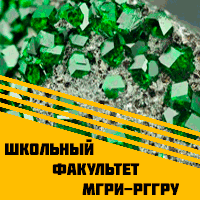Добрый день, Коллеги. Важное сообщение, просьба принять участие. Музей Ферсмана ищет помощь для реставрационных работ в помещении. Подробности по ссылке
Remote sensing of water-related hazards / Дистанционное зондирование опасностей, связанных с водой
Water-related hazards—including floods, droughts, rainfall-triggered landslides, soil salinization—and their impacts have increased significantly in the past decades. This increase has spurred research into improving monitoring and prediction, understanding the underlying drivers, implementing various mitigation and adaptation strategies, and identifying interconnectivity with other factors such as climate change, population growth, exposure, and socioeconomic development. The detection, monitoring, and forecasting of water hazards is critical to develop adaptation and mitigation measures and to prevent natural hazards from becoming human disasters.
Progress in computational modeling and remote sensing technology has transformed the field beyond recognition in just two decades. The wealth of sensors currently in orbit include a capability for large-scale optical remote sensing, near-infrared remote sensing, thermal imaging, passive and active microwave sensing, hyperspectral remote sensing, and multitemporal high-resolution synthetic aperture radar (SAR) sensing, among others. A multitude of algorithms has subsequently emerged to extract information from this data, which can be used for different a range of applications, from ecology to climate science.
Remote sensing of hazards will be increasingly looked upon to reduce our vulnerability and increase our resilience against extreme events. However, understanding the breadth of the available contributions in this area is challenging because scientists from different fields have used satellite observations to address problems in their own disciplines. For this reason, publications on remote sensing of hazards have appeared in disciplinary journals of many fields (such as hydrology, ecology, climatology, geography, agriculture, sensor deign, and social sciences). This can limit the visibility of disciplinary studies within the broader water hazards community. <...>




